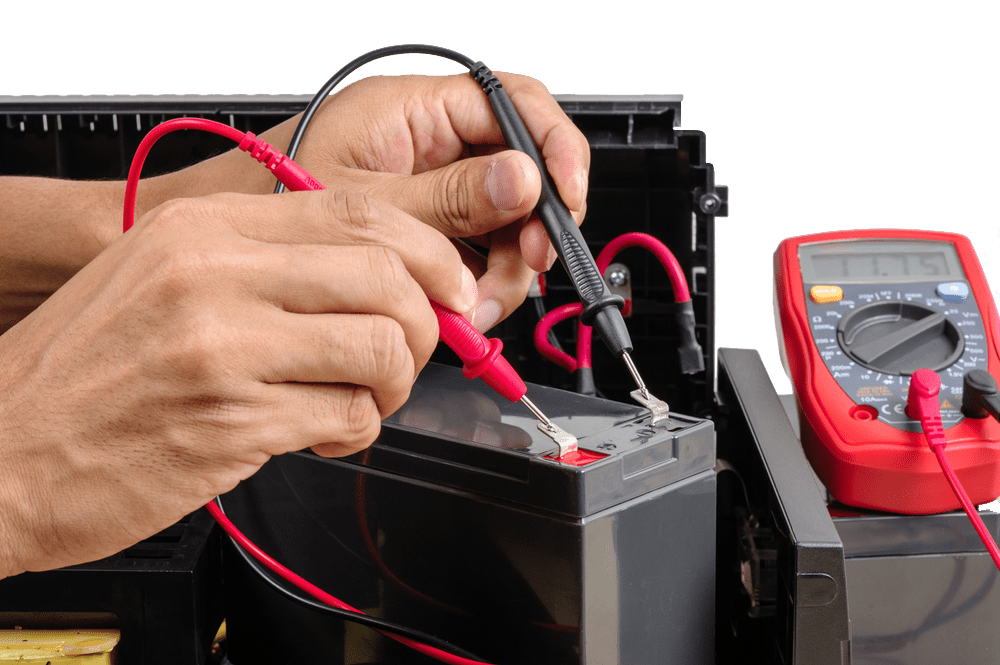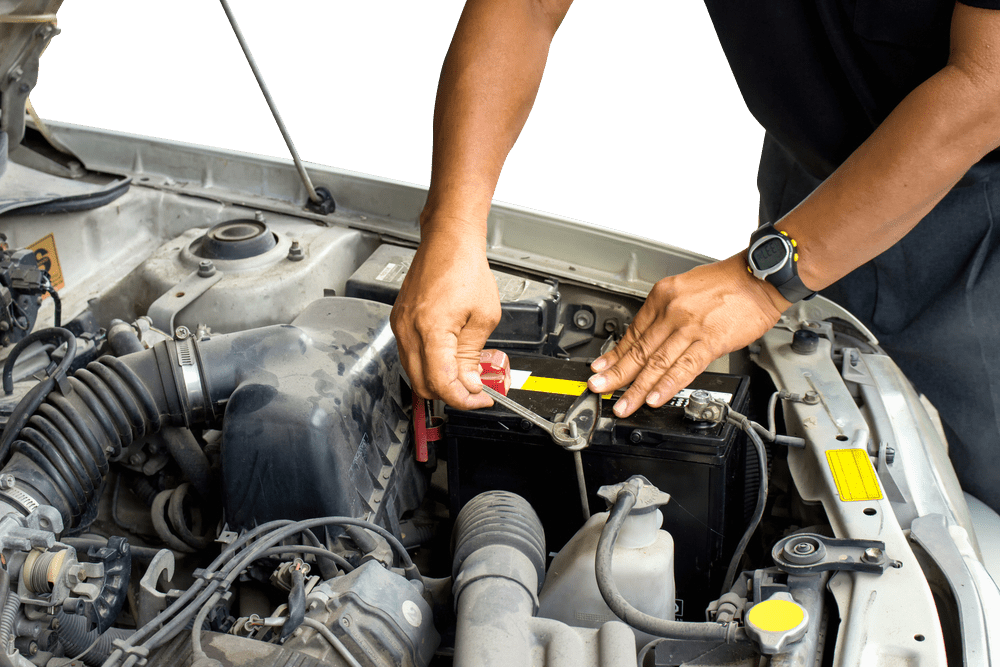- 25 Apr 2025
Are European car batteries different?

When it comes to automotive maintenance, the battery often doesn’t receive the attention it deserves until it fails. For owners of European cars in places like Sydney and beyond, understanding the unique characteristics of European car batteries is essential for proper vehicle care. These power sources aren’t just another component; they represent a critical difference between European automotive engineering philosophy and other approaches from around the world.
European vehicles—ranging from luxury brands like BMW and Mercedes-Benz to popular models like Volkswagen and Volvo—are engineered with specific battery requirements that often differ significantly from their American, Japanese, or Korean counterparts. This comprehensive guide explores what makes European car batteries distinct, why these differences matter, and what owners should know about maintenance, replacement, and optimization.
The Fundamental Differences in European Car Batteries
Engineering Philosophy and Design Specifications
European car manufacturers approach battery design with distinct priorities that reflect broader engineering values. While American vehicles often emphasize raw starting power for larger engines and Japanese cars frequently focus on reliability and longevity, European manufacturers typically prioritize:
- Performance under varied conditions: European batteries are designed to handle extreme temperature fluctuations common across European climates, from Scandinavian winters to Mediterranean summers.
- Energy density and efficiency: With fuel efficiency and emissions standards being particularly strict in Europe, batteries are engineered to support start-stop technology and regenerative braking systems effectively.
- Integration with complex electrical systems: Modern European car models feature sophisticated electrical architectures that require batteries capable of handling multiple loads simultaneously.
- Dimensional specifications: Physical dimensions and terminal layouts of European car batteries often conform to European DIN (Deutsches Institut für Normung) standards rather than the BCI (Battery Council International) standards common in North America.
Technical Specifications That Set Them Apart
From a technical perspective, European car batteries typically feature:
- Higher cold cranking amps (CCA): European batteries often provide greater starting power, particularly important for high-compression diesel engines common in Europe.
- Enhanced cycle life: Many European vehicles utilize start-stop technology, requiring batteries that can withstand frequent cycling without degradation.
- Advanced lead-calcium technology: Rather than traditional lead-antimony designs, many European car batteries use calcium-enhanced plates that reduce water loss and self-discharge.
- AGM (Absorbent Glass Mat) and EFB (Enhanced Flooded Battery) technologies: These advanced designs are standard in many European vehicles, supporting energy recovery systems and stabilizing electrical supply during heavy accessory usage.
Battery Technologies Common in European Vehicles
AGM Batteries: The Premium European Standard
AGM technology represents the gold standard for modern European car batteries. These batteries contain electrolyte absorbed in fiberglass mats between the lead plates, offering:
- Spill-proof design
- Superior vibration resistance
- Exceptional cycling capability (up to 3 times the cycling of conventional batteries)
- Faster recharging capabilities
- Better performance in extreme temperatures
Luxury European brands like BMW, Audi, and Mercedes-Benz frequently specify AGM batteries as original equipment. When seeking replacement batteries in Sydney or elsewhere, maintaining this specification is crucial for proper vehicle operation.
EFB Batteries: The Mid-Range Solution
Enhanced Flooded Batteries represent a middle ground between conventional and AGM technologies. They feature:
- Improved plate design for better cycling capability
- Polyester scrim on the positive plates to enhance stability
- Better charge acceptance than conventional batteries
- Support for basic start-stop functionality
Many mid-range European vehicles utilize EFB technology as a cost-effective way to support modern electrical systems without the premium cost of AGM batteries.
Conventional Flooded Batteries with European Specifications
Even when European manufacturers employ conventional flooded battery technology, the specifications typically differ from non-European counterparts in several ways:
- Different case sizes conforming to European DIN standards
- Terminal configurations specific to European vehicle designs
- Higher cold cranking amp requirements
- Different reserve capacity specifications
The Impact of European Battery Differences on Vehicle Performance
Understanding how European car batteries affect vehicle performance helps owners appreciate why proper specification matching is essential.
Start-Stop Technology Support
A hallmark of modern European vehicles is start-stop technology, which automatically shuts off the engine when the vehicle stops and restarts it when the accelerator is pressed. This system:
- Reduces fuel consumption by 5-10% in urban driving
- Places enormous demands on the battery (up to 10 times more starts than conventional vehicles)
- Requires specialized batteries that can handle frequent cycling
- Often incorporates regenerative braking that recharges the battery during deceleration
Standard batteries not designed for these systems will fail prematurely in European cars equipped with start-stop technology.
Energy Management Systems and Battery Monitoring
Modern European car models employ sophisticated energy management systems that:
- Constantly monitor battery state of charge and health
- Adjust charging rates based on driving conditions and battery temperature
- Prioritize electrical loads when battery capacity is limited
- Register new batteries in the vehicle’s computer system
These systems are calibrated for specific battery types, making it essential to use batteries that meet original equipment specifications.
Performance in Extreme Conditions
European car batteries are engineered for reliable performance across diverse environmental conditions:
- Enhanced cold-weather starting power for northern European winters
- Improved heat resistance for southern European summers
- Humidity resistance for coastal regions
- Vibration resistance for varied road conditions
This versatility makes them particularly well-suited for the variable climate conditions found across regions like Australia, including Sydney’s coastal environment.
Maintenance Considerations for European Car Batteries
Proper maintenance of European car batteries ensures optimal performance and longevity, particularly in locations like Sydney where temperature variations can impact battery life.
Unique Maintenance Requirements
European car batteries often have maintenance needs that differ from conventional batteries:
- AGM batteries require specific charging protocols to prevent damage
- Many European vehicles require battery registration when replaced
- Some European systems monitor battery health parameters that must be reset after service
- Electrical load management may need recalibration after battery replacement
Professional vs. DIY Maintenance
While basic maintenance checks can be performed by owners, several aspects of European car battery service typically require professional attention:
- Battery registration to vehicle management systems
- Diagnostics of advanced electrical systems
- Proper disposal of old batteries according to environmental regulations
- Specialized equipment for testing AGM and EFB batteries
In Sydney’s South West, businesses like South West Batteries specialize in European vehicle battery services, providing expertise that general automotive shops might lack.
Extending Battery Life in European Vehicles
To maximize the lifespan of European car batteries, owners should:
- Ensure all electrical accessories are turned off when parking for extended periods
- Drive the vehicle regularly to maintain charge
- Consider a battery maintainer during periods of extended storage
- Keep the battery clean and connections tight
- Have the charging system checked annually
- Respond promptly to warning lights related to charging or battery systems
Replacement Considerations for European Car Batteries
When the time comes to replace a European car battery, several factors warrant careful consideration.
OEM vs. Aftermarket Options
Owners face choices between:
- Original Equipment Manufacturer (OEM) batteries: These match the exact specifications of the original battery and ensure full compatibility with all vehicle systems. Though typically more expensive, they provide peace of mind regarding compatibility.
- Quality aftermarket alternatives: Reputable battery manufacturers offer European-specification batteries that meet or exceed OEM requirements, often at lower cost points. Companies like South West Batteries in Sydney specialize in matching appropriate aftermarket options to European vehicles.
- Generic replacements: These rarely meet the specific requirements of European vehicles and should generally be avoided despite their lower cost.
Important Specifications to Match
When replacing European car batteries, these specifications must be matched:
- Battery technology type (AGM, EFB, or conventional)
- Physical dimensions and terminal layout
- Cold cranking amps (CCA)
- Reserve capacity
- Amp-hour rating
- Voltage (while most use 12V systems, some European models have unique requirements)
Professional Installation Considerations
Professional installation is strongly recommended for European vehicles due to:
- The need for battery registration with the vehicle’s computer system
- Potential for electrical system damage if incorrect procedures are followed
- Requirements for specialized tools to access batteries in some European models
- Proper disposal of old batteries in accordance with environmental regulations
In Sydney, specialized service providers understand these requirements for European vehicles and can ensure proper installation.
Regional Considerations: European Car Batteries in Sydney

For European car owners in Sydney, several regional factors affect battery performance and selection.
Climate Impact on Battery Performance
Sydney’s climate poses specific challenges for European car batteries:
- Hot summer temperatures can accelerate water loss in conventional batteries
- Coastal humidity can increase corrosion risk for terminals and connections
- Mild winters mean cold-starting capability is less critical than in European conditions
- Urban driving patterns with frequent stops increase demands on batteries supporting start-stop systems
Finding Specialist Service in Sydney
Sydney offers several resources for European car battery needs:
- Specialized European vehicle service centers
- Battery experts like South West Batteries that understand European specifications
- Dealerships for European brands that maintain OEM battery inventory
- Mobile battery services that bring European-specification batteries to your location
Cost Considerations in the Australian Market
In the Australian market, European car batteries typically command a premium price compared to batteries for Asian or American vehicles due to:
- Import costs for European-specification batteries
- Advanced technologies like AGM and EFB that come standard in many European models
- Lower volume of sales compared to batteries for more common Asian vehicles
- Need for specialized testing and installation equipment
Common European Car Models and Their Battery Specifications
Different European manufacturers have specific battery requirements based on their vehicle designs and electrical systems.
German Brands
BMW:
- Luxury models: AGM batteries with 90-105Ah capacity
- Registration with vehicle computer required
- Often located in trunk or under rear seat
- Requires specialized equipment for replacement
- Predominantly AGM technology
- Higher CCA requirements than many other brands
- Sophisticated battery management systems
- Often features auxiliary batteries for system redundancy
Volkswagen/Audi:
- Mix of AGM and EFB depending on model
- Start-stop technology standard on most recent models
- Battery monitoring systems integrated with vehicle diagnostics
- Specific dimensional requirements that differ from non-European vehicles
Other European Manufacturers
Volvo:
- Pioneer in start-stop technology
- High emphasis on battery durability in varied conditions
- Often uses larger capacity batteries than comparable vehicles
Peugeot/Citroën:
- Sophisticated energy management systems
- Often places batteries in non-traditional locations
- Requires specific reset procedures after replacement
FIAT/Alfa Romeo:
- Compact battery compartments requiring precise fit
- Increasing use of stop-start technology even in smaller models
- Specific Italian DIN specifications
The Future of European Car Batteries
The landscape of European car batteries continues to evolve, with several trends shaping future developments.
Emerging Technologies
European manufacturers are leading several battery innovations:
- Lithium-ion starter batteries: Offering weight reduction and performance improvements
- Enhanced AGM designs: With improved cycling capability and faster recharge rates
- 48V mild hybrid systems: Requiring specialized battery configurations
- Intelligent dual-battery systems: Managing power between starting and accessory functions
Environmental Considerations
European regulatory pressure is driving battery changes:
- Reduced environmental impact in manufacturing
- Improved recyclability at end of life
- Lower lead content through advanced design
- Extended service life to reduce replacement frequency
Integration with Electrification Trends
As European manufacturers accelerate electrification:
- Conventional batteries are being redesigned to work alongside high-voltage systems
- Battery management systems are becoming more sophisticated
- Diagnostic capabilities are expanding
- The distinction between starter batteries and propulsion batteries is blurring in some designs
Conclusion: Making the Right Choice for Your European Vehicle
European car batteries represent more than just another automotive component; they’re an integral part of sophisticated vehicle systems designed with specific performance parameters in mind. Whether you drive a BMW in Berlin or a Volkswagen in Sydney, understanding these differences is crucial to maintaining your vehicle’s performance, reliability, and longevity.
For European vehicle owners, particularly those in areas like Sydney where specialized knowledge may be less common than in Europe, partnering with experts like South West Batteries who understand the unique requirements of European vehicles can make a significant difference in service quality and vehicle performance.
By matching the correct battery technology, specifications, and installation procedures to your specific European model, you ensure that your vehicle continues to perform as the engineers intended—with reliability, efficiency, and the driving experience that makes European cars distinctive in the automotive landscape.
When it comes time to replace your European car battery, remember that the initial cost difference between a properly specified battery and a generic alternative pales in comparison to the potential costs of electrical system damage, premature failure, or compromised vehicle performance. The right battery is an investment in your European vehicle’s future—one that pays dividends in reliability and performance for years to come.











